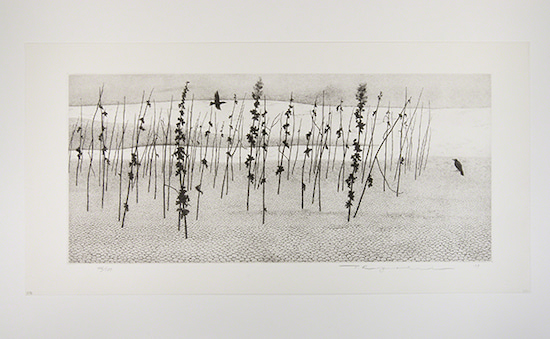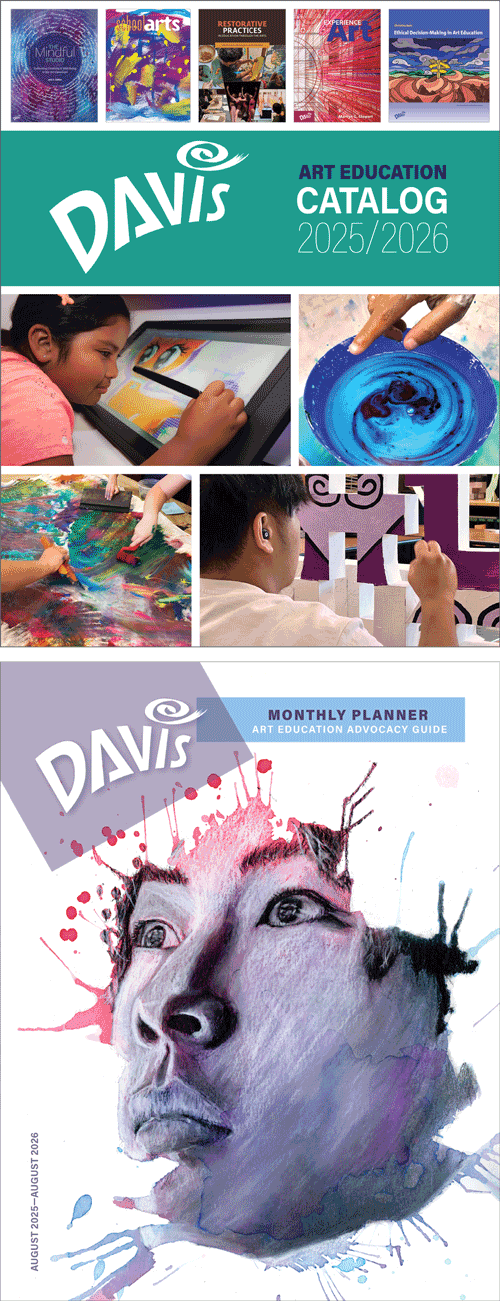Gem of the Month: Ryōhei Tanaka
My gem of the month for June is a fantastic printmaker from Japan, Ryōhei Tanaka. If you ever want to teach a lesson about use of line to depict nature, this artist fills the bill for imagery. His amazingly detailed views of nature are so in the Japanese tradition of reverence for nature as reflected in art.
 |
| Tanaka Ryōhei (1933–2019, Japan), River Bed, 1979. Etching on paper, sheet: 11 15⁄16" x 23 ⅞" (30.3 x 60.6 cm). Philadelphia Museum of Art. © 2025 Artist or Estate of Artist. (PMA-8164) |
Similar to traditional Nihon-ga (“Japanese painting”) artist Kawase Hasui (1883–1957), Tanaka traveled extensively—mostly in the environs of the ancient capital, Kyoto—to sketch subjects out of doors. He captured minute details of nature this way. This is evident in the astoundingly detailed group of lines that make up the subject in River Bed. There is never a trace of human beings in his etchings, except for the obvious “hand of man” of his works dealing with ancient Japanese farms.
Typically, Tanaka etched his plate immediately after his sketching trips while details were fresh in his mind. In River Bed, he introduced aquatint in the background in the cloud forms. Like traditional Japanese landscape painting, most of Tanaka's etchings are monochromatic with value and placement to aid in the illusion of depth.
The results of World War II (1939–1945) had a devastating effect on Japanese culture. With a secularized emperor and a questioning of traditional values that had led to the disastrous war, many Japanese artists uprooted artistic traditions in the resurrected postwar economy. Printmaking ascended as a vital medium because of the value on mass production.
This new printmaking did not have full impact until the 1950s. The generation after Hiroshima found a treasure trove of new technologies for printing from mezzotints to silkscreen. New processes were enthusiastically absorbed. New photo print methods were also explored. Contemporary Japanese printmaking exploded with ingenuity.
Tanaka was born in Takatsuki City, Osaka Prefecture. Only when he was thirty years old did he pursue printmaking under print artist Yoshio Furunō (1909–1978). Furunō introduced him to etching because of the medium's ability to reproduce extremely fine detail more easily than woodblock prints, an ages-old Japanese tradition. The impetus for such realism was Tanaka's desire to depict what he perceived to be the vanishing countryside and ancient farmhouses around Kyoto. Tanaka's first exhibition was in 1966.
Correlations to Davis programs: Explorations in Art 2E Grade 1: 1.2, 4.5; Explorations in Art 2E Grade 2: 1.7, 1.9; Explorations in Art 2E Grade 4: 1.9, 3.1, 3.2, 4.5; Explorations in Art 2E Grade 5: 4.1; Explorations in Art 2E Grade 6: 2.1; Experience Art: 4.1, 4.2; Experience Printmaking: Chapter 5; Discovering Drawing 3E: p.48, Chapter 4; The Visual Experience 4E: 4.1

Comments